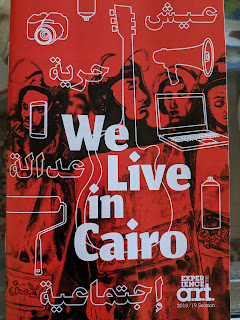Globalization on the silk route
By Kashif-ul-Huda, TwoCircles.net
Since 1980s, globalization has been a much used and rather abused word. But the fact is that trade between civilizations, countries, and continents have been going on for thousands of years. Until the middle of the twentieth century, borders between countries were never well defined.
All empires and regimes had areas of influence which was used to tax the population and produce. True, they did levy taxes on trade coming in their region but goods and people freely moved about on land and water. Trade through ocean helped Islam spread to Southern India and South East Asia.
Silk route is another famous example of globalized nature of trade over land. The silk route connected China and India to Central Asian and Mediterranean countries. In 1940s the borders that had remained on paper got manifested on the ground. All trade activities came to a halt as a result of border closure. People and goods that have moved in the region for thousands of years suddenly came to a stop.
Ladakh, which was an important junction of the silk trade suffered immensely when China, India, and Pakistan erected their borders. Trade activities abruptly came to a halt. Trading goods and knowledge of the trade and routes were slowly lost or forgotten.
In July 2005, an attempt was made in preserving the history and role of Ladakh in silk route by establishing Munshi Aziz Bhat Museum. Munshi Aziz Bhat owned a caravan-serai in Kargil district of Ladakh. Central Asian traders used to stay in his caravan-serai. He himself was a trader and when trade stopped goods in his storage were left forgotten. Recovered in 2000 during a renovation project, his grandson with the help of friends established a museum to house the artifacts that best captures the reach and depth of the trade along the silk route during the 1940s.
The Culture of Here- a documentary movie by husband-wife team of Abdul Nasir Khan and Jacqueline Fewkes presents the trading history of Ladakh region in the context of the establishment of Munshi Aziz Bhat Museum. A labour of love and in-depth research, the documentary reveals the wide reach of trade in this region.
You will find stoves from Germany and sugar from Cuba, all preserved in the time capsule of Aziz Bhat caravan-serai. Color dyes from Japan and threads from Europe goes into producing clothes that are uniquely Ladakhi.
Moviemakers are able to pack lot of information in 30 minutes. Material is presented in very engaging way and even the uninitiated ones can quickly learn about Ladakh, its people, culture, and history.
Importance of persevering history and why and how to do it – are the important lessons of this documentary.
Since 1980s, globalization has been a much used and rather abused word. But the fact is that trade between civilizations, countries, and continents have been going on for thousands of years. Until the middle of the twentieth century, borders between countries were never well defined.
All empires and regimes had areas of influence which was used to tax the population and produce. True, they did levy taxes on trade coming in their region but goods and people freely moved about on land and water. Trade through ocean helped Islam spread to Southern India and South East Asia.
Silk route is another famous example of globalized nature of trade over land. The silk route connected China and India to Central Asian and Mediterranean countries. In 1940s the borders that had remained on paper got manifested on the ground. All trade activities came to a halt as a result of border closure. People and goods that have moved in the region for thousands of years suddenly came to a stop.
Ladakh, which was an important junction of the silk trade suffered immensely when China, India, and Pakistan erected their borders. Trade activities abruptly came to a halt. Trading goods and knowledge of the trade and routes were slowly lost or forgotten.
In July 2005, an attempt was made in preserving the history and role of Ladakh in silk route by establishing Munshi Aziz Bhat Museum. Munshi Aziz Bhat owned a caravan-serai in Kargil district of Ladakh. Central Asian traders used to stay in his caravan-serai. He himself was a trader and when trade stopped goods in his storage were left forgotten. Recovered in 2000 during a renovation project, his grandson with the help of friends established a museum to house the artifacts that best captures the reach and depth of the trade along the silk route during the 1940s.
The Culture of Here- a documentary movie by husband-wife team of Abdul Nasir Khan and Jacqueline Fewkes presents the trading history of Ladakh region in the context of the establishment of Munshi Aziz Bhat Museum. A labour of love and in-depth research, the documentary reveals the wide reach of trade in this region.
You will find stoves from Germany and sugar from Cuba, all preserved in the time capsule of Aziz Bhat caravan-serai. Color dyes from Japan and threads from Europe goes into producing clothes that are uniquely Ladakhi.
Moviemakers are able to pack lot of information in 30 minutes. Material is presented in very engaging way and even the uninitiated ones can quickly learn about Ladakh, its people, culture, and history.
Importance of persevering history and why and how to do it – are the important lessons of this documentary.

Comments